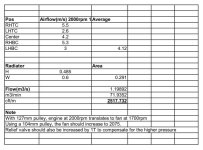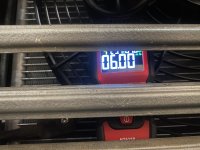Iain_U1250
Explorer
Our diesel stove decided not to work on our last trip. From what I can tell, the main control board is not working. The parts along are over $1000 AUD, and that's if it is just the main board.
We decided to switch over to an induction cooktop. It was a bit more complicated than just plugging in the new stove, as our inverter is only good for 1500W, and this stove needs something around the 3000W mark. So I bought a new inverter, a 3000W Renogy one, which was only $400, and the Empava cooktop was $199. I had to rewire a lot of the heavy current wiring as this inverter can draw some serious current - around 250A. I used 70mm2 cable, with the earth wire connected directly to the earth shunt, and positive connected to the main joint between front and rear battery banks. The inverter wiring is protected with a 250A circuit breaker, which should be more than adequate to protect 70mm2 cable,

The induction stove can boil 750ml of water in about 5 minutes, and draws 80-120A. With both plates on maximum, it draws 180-200A, some serious current.
The inverter has a remote start unit, and I added a 120mm fan and some vents to force some air around the inverter and the cooktop. Whilst I was modifying the panel I added another USB charger as well, as you can never have enough.

The lid for the old cooktop still fits nicely. It will protect the stove whilst we travel and from dropping things on it.

We decided to switch over to an induction cooktop. It was a bit more complicated than just plugging in the new stove, as our inverter is only good for 1500W, and this stove needs something around the 3000W mark. So I bought a new inverter, a 3000W Renogy one, which was only $400, and the Empava cooktop was $199. I had to rewire a lot of the heavy current wiring as this inverter can draw some serious current - around 250A. I used 70mm2 cable, with the earth wire connected directly to the earth shunt, and positive connected to the main joint between front and rear battery banks. The inverter wiring is protected with a 250A circuit breaker, which should be more than adequate to protect 70mm2 cable,

The induction stove can boil 750ml of water in about 5 minutes, and draws 80-120A. With both plates on maximum, it draws 180-200A, some serious current.
The inverter has a remote start unit, and I added a 120mm fan and some vents to force some air around the inverter and the cooktop. Whilst I was modifying the panel I added another USB charger as well, as you can never have enough.

The lid for the old cooktop still fits nicely. It will protect the stove whilst we travel and from dropping things on it.


















